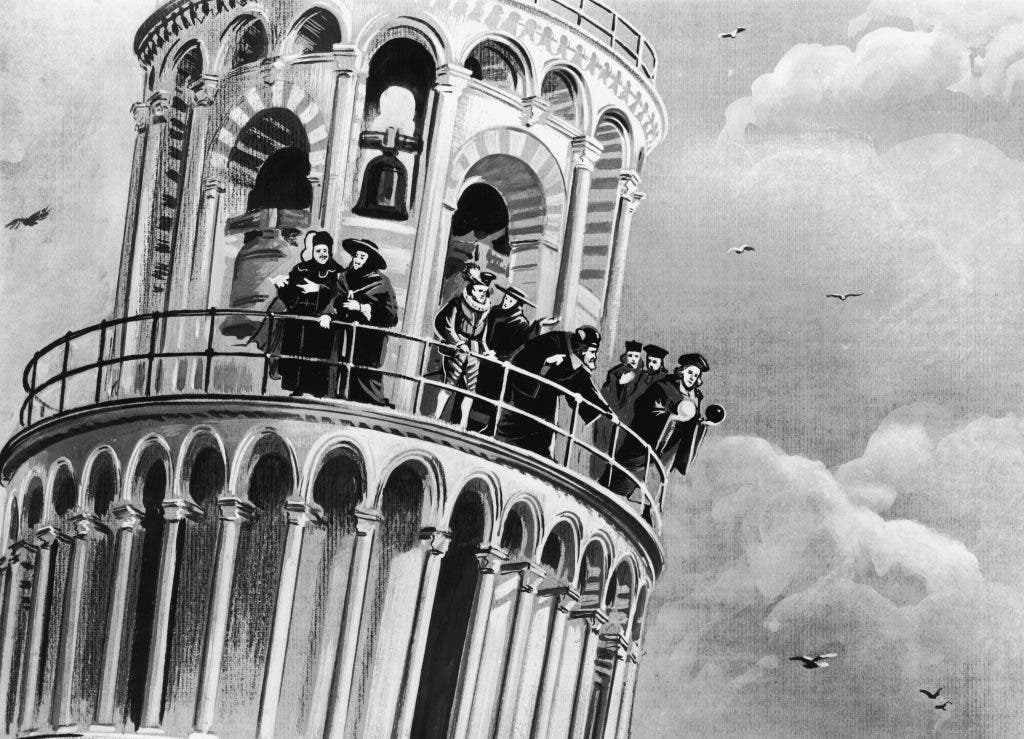Extraordinaire experimental physicist Galileo Galilei allegedly climbed hundreds of step to reach the top of the Leaning Tower of Pisa’s – which wasn’t so leaned as it is today – and dropped pairs of balls of different weights and materials onto the ground. The experiment was meant to prove in front of the crowd of scholars and students gathered in front of the tower that regardless of an object’s mass, whether it’s wood or lead, all objects fall with the same acceleration. If there were no friction, a feather and a cannon ball would reach the ground at the same time. It’s unclear if the whole story is merely a legend or not, but needless to say it’s an inspiring anecdote. Now, Galileo’s experiment will be adapted in ways the great classical physicist could never have imagined, as the ultimate test for one of Einstein’s general relativity caveats.

Called the Drag-Compensated Micro-Satellite for the Observation of the Equivalence Principle (MicroSCOPE), the experiment will contain two free-floating weights of different materials and will monitor whether one feels a stronger tug from Earth’s gravity than the other. If this were to happen, it would violate the mass equivalence principle which posits inertial mass and gravitational mass are absolutely one of the same time, independent of material composition or mass. The mass equivalence principle is a key assumption made by Einstein to draft his theory of general relativity which states acceleration and gravity are essentially the same thing.
One mass
There are actually several types of mass. The kind that most corresponds to our intuitive sense of mass is inertial mass which describes resistance to acceleration. If you push two objects of different inertial masses with the same force, the one with the less inertial mass will accelerate more. A two tonne truck has more resistance than a wheel chair. Another type of mass is known as gravitational mass. Gravitational mass is what (in Newton’s gravity) causes the gravitational attraction between objects. When you step on a scale in the morning, you are measuring your gravitational mass. The third type of mass is known as relativistic mass. This stems from Einstein’s theory of special relativity and the equivalence of mass and energy (the famous E equals m c squared). In that famous equation, E is the energy of a particle, and c is the speed of light. So if you divide the energy of a particle by the speed of light squared, you get a “mass”, known as the relativistic mass of the particle.

General relativity isn’t completely reconciled with quantum mechanics – the physics of the small scale. Basically, some observed phenomena in quantum mechanics couldn’t be explained by the mass equivalence principle. The team behind MicroSCOPE, thus, want to test mass equivalence with unprecedented precision because even a minute variation between the two masses would mean that the equivalence principle does not apply in all cases. Spotting a violation would definitely mean that there is some sort of physics beyond Einstein’s theory. This might help physicists make a breakthrough. Otherwise, it could prove equally useful since physicists can finally stop worrying about whether or not the mass equivalence is true or not.
Of course, the mass equivalence has gone through countless tests and experiments – not one proved a violation. The most precise experiment to date was made by Eric Adelberger, a physicist at the University of Washington, Seattle, and colleagues in the Eöt-Wash Group, named after 1800s Hungarian physicist Loránd Eötvös who pioneered the method used by the group. According to Science author Adrian Cho:
“Eötvös used a small dumbbell of weights of different materials suspended horizontally from a thin fiber. Gravity pulls each weight toward the center of Earth. But Earth also spins, so the inertia of the weights creates a tiny centrifugal force that flings them away from the planet’s axis. The sum of the two forces, which align only at the equator, defines the direction “down” for each weight. If the equivalence principle holds, then the centrifugal force on each weight is locked into proportion to the gravitational one, so down is the same for both weights. Then, the dumbbell will rest pointing in any direction.
But if inertial and gravitational mass are different, then the flinging will affect the weights differently and the net force on each one will point in a slightly different direction. “If the equivalence principle is violated, then every material has its own down,” Adelberger says. That difference would cause the dumbbell to twist toward a particular orientation. In 1889, Eötvös saw no such sign and confirmed the equivalence principle to one part in 20 million.”
Of course, today the experiment is a lot more refined. Eöt-Wash researchers have been constantly tweaking the method for the past 25 years. Their current rig consists not of a dumbbell but of a nearly cylindrical shell studded on either side with weights of different materials. Likewise, instead of being based on a static twist, the whole rig rotates. The scientists then just have to look for periodic twisting of the cylinder. Using beryllium and titanium, they found gravitational and inertial mass equal to one part in 10 trillion, as they reported in Physical Review Letters in 2008. The MicroSCOPE will test the equivalence principle to one part in a quadrillion.
The MicroSCOPE satellite will host two cylindrical shells inside: one the size of a toilet paper roll and made of titanium and a smaller one inside it made of platinum-rhodium. If the equivalence principle holds, both will glide on precisely the same orbit. If not, one should slip Earth-ward relative to the other.
According to models made by the MicroSCOPE researchers, the probe has a chance of seeing a strong signal, meaning it might show a violation of the mass equivalence principle. But nothing’s certain until the €200 million mission will reach Earth’s orbit in April 2016 – and not even then.


